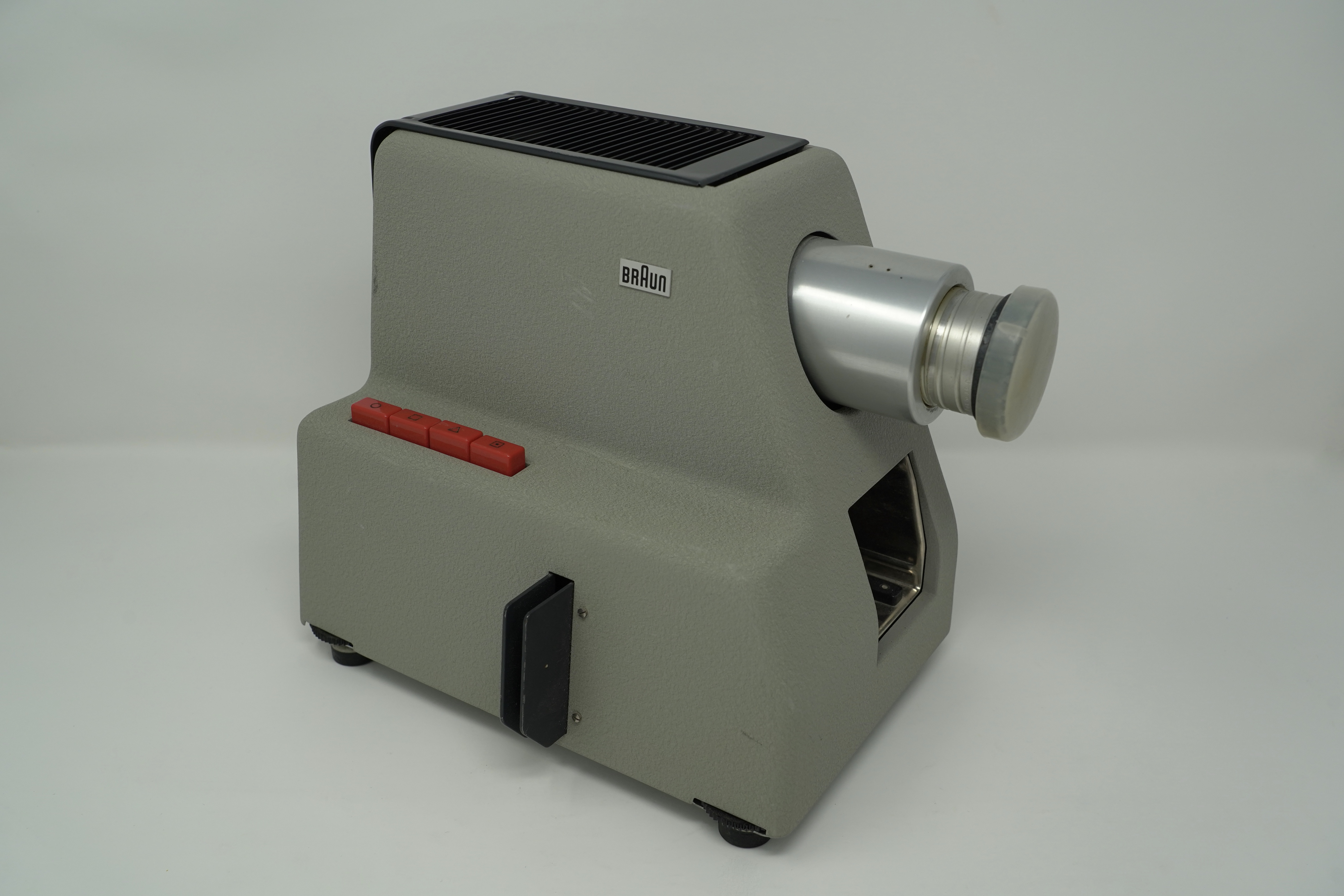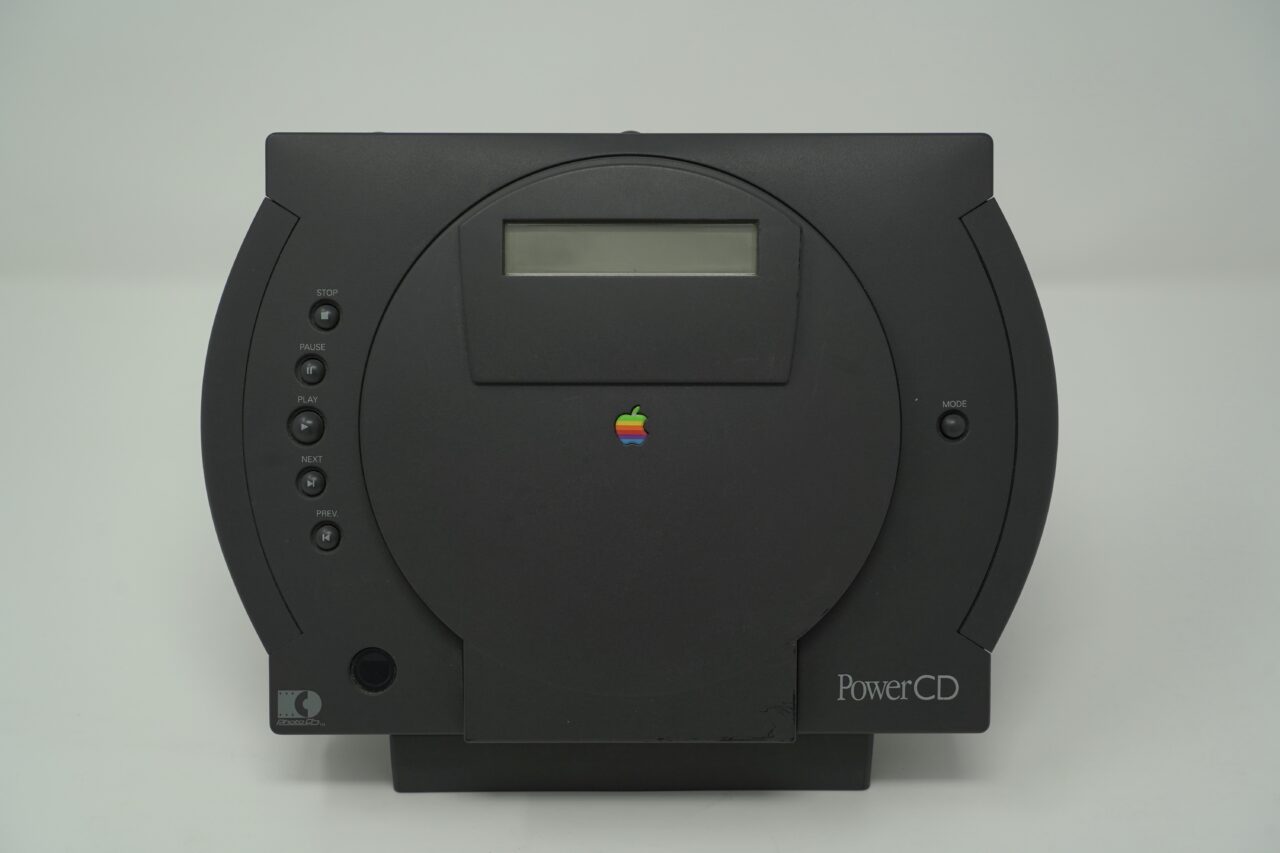New Show at ECU Library + Archives Spotlights Roman Izdebski Industrial Design Collection

First released in 1956, the Braun PA1 Automatic Slide Projector was the first Braun product to be designed in its entirety by Dieter Rams. One of the design features that make this projector unique was its die-cast textured finish, which combined with the black details and bright red buttons gave it a very industrial aesthetic. (Photo by Carson Adams / courtesy ECU Library + Archives)
Posted on
Curated by ECU student Carson Adams, the exhibition offers a fascinating look at an extraordinary industrial design collection at ECU.
A new exhibition at the ECU Library + Archives showcases industrial design objects drawn from the Roman Izdebski Industrial Design Collection, held by the Department of Design & Dynamic Media.
With a focus on audio devices, computation and communication technology, household appliances, toys, beverage containers, cutlery and more, the collection “illustrates vividly how the design of objects has evolved over time, serves as a vital educational tool for students, and supports design curricula,” writes interim university librarian D. Vanessa Kam in the introductory text to the exhibition.
Vanessa notes that the collection exemplifies Roman’s conviction that “‘Good design’ is always where there is a truthful correspondence between form, function and meaning.’”
Roman Izdebski (1946–2020) was an industrial designer born and trained in Warsaw, Poland. After teaching industrial design from 1976 onwards in various post-secondaries in Canada, he joined the faculty at ECU.
The exhibition is curated by ECU student Carson Adams (BFA 2026). Prior to the exhibition, Carson completed an inventory of the collection in collaboration with fellow student Eden Zinchik (BDes 2023), as well as Vanessa and ECU archivist Kristy Waller. The cataloging process involved researching, photographing and writing descriptions for more than 90 individual objects.

The Apple PowerCD was the first standalone consumer device the company had ever shipped, as it did not require a computer to operate. Basically a rebranded Phillips player, the upright optical disc drive could be used with a computer as an external drive via SCSI. It came with a remote, and the whole thing could run on AA batteries for portability. (Photo by Carson Adams / courtesy ECU Library + Archives)
Carson says spending so much time with the Izdebski collection was an eye-opening experience. He recalls being surprised at how unremarkable many of the objects initially appeared.
“But I learned that ordinary objects are often quite significant, as they become blueprints of innovation,” he tells me via email. Cataloging the collection also offered lessons in how design objects make their mark.
“Having the opportunity to photograph the collection reintroduced me to the world of product photography, and how the ways design is circulated and portrayed can impact its success in the increasingly digital world,” he says. “My experience with the Roman Izdebski collection has reignited a childlike curiosity for why and how things are the way they are, and I hope to continue to learn about old, new and recycled designs that surround me, fostering a passion for understanding.”
Vanessa recalls a conversation about the collection with ECU faculty members Leo Vicenti, Haig Armen and Katherine Gillieson. Leo said the collection could help teach interface design. Haig noted the objects could be used in ergonomics classes, where students “could hold the personal devices in their hands and evaluate the quality of the ergonomic design of the object,” Vanessa recounts.
“The faculty members felt that making the collection accessible to students would enable students to advance their own research and explorations into design, while also learning about important design precedents.”

Hotpoint launched many appliance industry firsts, including the Hotpoint Electric Toaster -- a side-opening electric two-slice toaster that has nickel-plated sheet metal, trapezoid-shaped body with overhanging top, curved corners, bent rim, and is pierced with geometric pattern. Electric toasters, which did not gain real popularity until the late 1920s, were often a symbol of modernism. The toaster’s “Art Deco” styling was a combination of many different art movements of the time. It used geometric shapes and unusual, modern materials to create a new, “modern” aesthetic that became increasingly popular until the great depression. (Photo by Carson Adams / courtesy ECU Library + Archives)
She adds that the work of cataloging and exhibiting collections is, in and of itself, a valuable tool for learning.
“I think it’s always instructive for students to have opportunities to curate exhibitions,” Vanessa tells me. “The work that they do in getting to know the collection; conceiving of a compelling theme or topic for the exhibition; selecting objects that exemplify the chosen theme; mounting an attractive physical display; and writing didactic panels and labels are all wonderful skills/experiences for students to have, and will help to prepare them for their lives as professionals working in art and design.”
The Roman Izdebski Industrial Design Collection is on view at the ECU Library + Archives through Sept. 15, 2023. The collection inventory is accessible online via Arca, ECU Library’s institutional repository.
Learn more about the Roman Izdebski collection — as well as ECU Library’s numerous extraordinary special collections — at any time via Arca.
--
Visit ECU online today to learn more about studying Industrial Design, Curatorial Practices and Photography at Emily Carr.